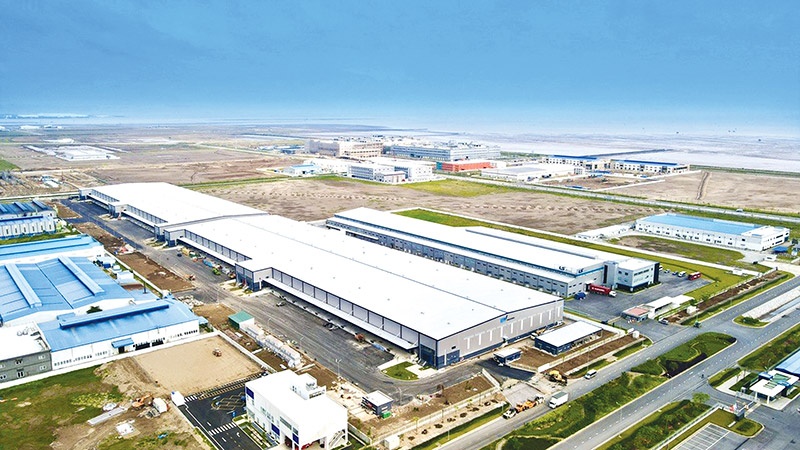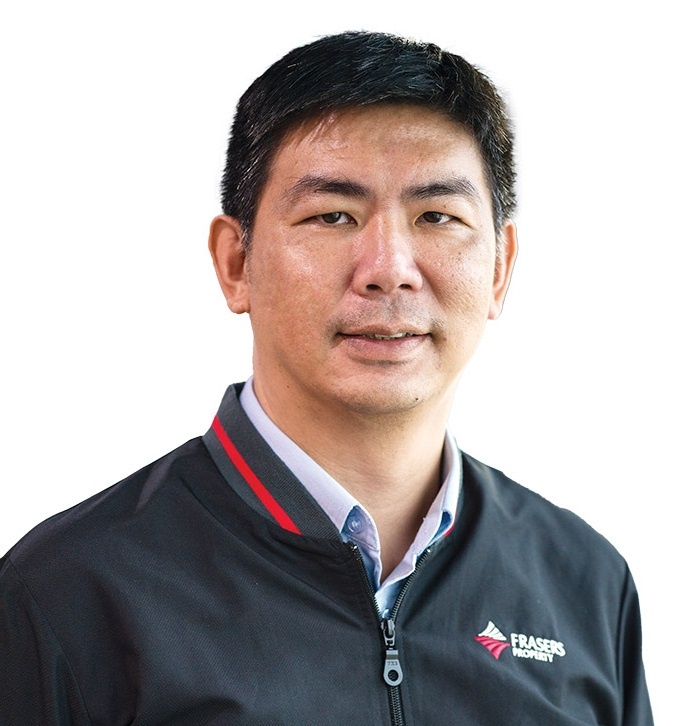Green industrial complexes at top of foreign-led wishlist
 |
| Factories are now more likely to be powered fully by renewable energy, Le Toan |
The Danish toy-maker Lego is eager to implement its $1 billion facility in the southern province of Binh Duong. In a meeting with leaders of Binh Duong People’s Committee in mid-June, Lego vice chairman Preben Elnef expressed hope that the province will soon give support to the group so that it can establish a legal entity in Vietnam soon, build the factory, and recruit labourers.
Right after Vietnam-Singapore Industrial Park (VSIP) Group started the construction of its third industrial-urban-service complex in Binh Duong in late March, Lego registered to settle its factory there. Vice chairman Elnef said that one of the reasons for choosing VSIP 3 to build its carbon-neutral factory is that it is able to meet the green requirements of the project.
“The new factory will feature solar panels on its roof and VSIP will build a nearby solar project on behalf of the group. Combined, these solar parks will produce enough renewable energy to match 100 per cent of the factory’s annual energy requirements,” Elnef said.
It will be constructed with an aim to meet a minimum standard of LEED gold certification, which covers all areas of sustainability including energy, water, and waste. “The factory will be designed to accommodate electric vehicles and be outfitted with energy-efficient production equipment,” he added.
VSIP confirmed it will install a 50-hectare solar farm to provide electricity for big customers like Lego, towards sustainable development projects using renewable energy such as solar power to ensure carbon emission requirements.
Along with Lego, 30 other domestic and foreign-invested enterprises are also studying the investment opportunities in this VSIP. Another example is a project funded by Danish jewellery brand Pandora to build a new crafting facility. Around 60 million pieces of jewellery would be built to LEED gold standards and the facility will be powered by 100 per cent renewable energy.
Along with Bac Ninh, VSIP integrated projects have also been established in Binh Duong, Haiphong, Quang Ngai, Nghe An, and Binh Dinh over the past decade and more.
In recent times, the model of eco-IP and integrated urban-service IP complexes have received the attention of many investors. Notably, in the first six months of this year, many foreign groups have moved to either propose or develop the complex.
A few months ago, Saigontel, Vinacapital, and Singapore’s Aurous Capital Pte., Ltd. signed an MoU on developing an industrial and urban complex worth $2.5 billion in the northern province of Bac Giang.
Under that, the complex will combine 500ha of industrial estates and 200ha of housing, towards attracting projects in high technology, clean industry, logistics, and the supporting industry. The project is expected to begin later this year.
In January, SMCity and Orgel Vietnam Co., Ltd. from South Korea proposed to promote procedures to invest in smart urban projects, services, and golf courses in the northern province of Hai Duong.
SMCity director Kang Bong Jun said, “We wish to develop the most modern industrial-urban-service park under international standards, with the main focus being to protect the environment.”
The two companies are surveying a location on more than 300ha in Tu Ky district, adjacent to Hai Duong city.
At May’s Vietnam Industrial Property Forum held in Ho Chi Minh City, Somhatai Panichewa, general director of Amata Vietnam said the company has made many proposals to local authorities about recycled water, green energy, and water reserves as well as city management.
“The development of smart, environmentally-friendly industrial cities will increase the cost of infrastructure, but it is an effective solution for customers to reduce investment fees,” Panichewa said.
If the government would permit a large-scale park, groups like Amata can come up with bigger plans and cooperate with big partners to make it more competitive, Panichewa added. “Setting up an eco-IP system is not possible alone. There should be mutual support among secondary investors in the area. Especially, with an IP with a large enough land bank, infrastructure investors can cooperate with large partners to accelerate the construction and completion of a smart industrial city like Amata in Vietnam,” she said.
Amata Vietnam, which is a subsidiary of Thai-invested Amata Corporation, currently operates three industrial-urban complexes in Long Thanh, Halong, and also in Bien Hoa.
Since 2015, the Ministry of Planning and Investment has cooperated with the United Nations Industrial Development Organisation and a number of international organisations to implement the pilot conversion of traditional industrial areas into ecological ones, while promoting cooperation in production to use resources effectively.
Tran Duy Dong, Deputy Prime Minister of Planning and Investment, said, “Developing industrial-urban-service complex projects open up new development directions for industrial cities to synchronise economic and residential factors. The model creates a closed circle that makes a living, learning and playing environment for investors and the community.”
In order to create a favourable mechanism for investors to develop eco-IP or industrial and urban complexes, in late May, the government issued Decree No.35/2022/ND-CP regulating the management of industrial properties. With many important amendments and supplementations, the decree will contribute to clarifying the legal framework, shortening administrative procedures, and creating more favourable conditions for investors to develop industrial real estate.
| Tran Thi Thanh Hao - Head of Legal BW Industrial Development JSC
The promulgation of Decree 35 would help reduce administrative procedures for businesses significantly. However, there are certain concerns for BW when it comes to investing in ready-built properties and other financiers having their business operations in IZs. Article 13 provides a mechanism for converting IZs to developing urban-service parks. To effectuate such conversion, among other conditions, the decree mentions there must be a consensus among IZ developers and more than two-thirds of tenants who sub-lease land in the area that is planned to be converted. This provision may raise a concern for tenants who vote against the conversion as they would usually be ones who may have not been prepared to move their business facilities to another place or may not be financially ready to lease new premises. Thus, there ought to be clear guidance following the issuance of the decree, to protect those who are affected by the conversion. Developers and relevant authorities must prepare a new place for tenants who are affected by the conversion to move their business facilities to and compensate such tenants for costs incurred in relation to the movement and their business disruption. Other issues relate to Article 9.4 and Article 27.2, which provide requirements for land bank and incentives for small- and medium-sized enterprises and other groups entitled to incentives under the Law on Investment; and Article 27.5 which expressly recognises developing and leasing ready-built facilities as an accepted industry in IZs. | |
| Trang Bui - General manager Cushman & Wakefield Vietnam
Decree 35 is considered a policy breakthrough, which promptly removes bottlenecks and overlaps in-laws, administrative procedures, and the management of IZs and economic zones. It specifies types of master plans of IZs, and also allows cases in which planning tasks are not required, which will save on implementation time. A special feature of the decree is that the provincial authority has been assigned the right to adjust the location and planning area for construction of IZs for specific cases, after obtaining written opinions from the Ministry of Construction, the Ministry of Natural Resources and Environment, and the Ministry of Planning and Investment. One important point is that the new decree clearly classifies types of parks into supporting, specialised, high-tech, urban-service, and eco-IP. Therefore, the new decree has met the expectations of investors and helped to attract more funding into industrial real estate. | |
| Chong Chee Keong - Industrial general manager Frasers Property Vietnam
In recent years, industrial cluster development has become the main trend. However, many problems in the development of the industrial chain have been exposed in recent years. As a response, professional IPs and clusters that cover the upstream and downstream of the entire industrial chain as much as possible have become a better choice. The controllability and safety of the entire industry chain, as well as the centralised response to emergencies, all provide new evidence for accelerating industrial agglomeration. With the continuous improvement of communication technology and intelligent manufacturing, in recent years, intelligent manufacturing has received varying degrees of attention and advancement in various regions. During the pandemic, the traditional manufacturing model has withstood a great test, and it has also found great help for the advancement of intelligent manufacturing. In the past, the construction of IZs, including water, electricity, and roads became one of the basic conditions. In the long run, smart manufacturing will become a new infrastructure. IZs are the mainstay, providing a more information-based, technological, and intelligent basic environment for manufacturing companies, which will become the key to the differentiated development of IZs in the next step. | |
| Dr. Nguyen Cao Lanh - Dean of Architecture and Planning, Hanoi University of Civil Engineering
Compared with Decree 82, Decree 35 has far more realistic regulations, reducing some of the administrative procedures for businesses. However, there are still no mandatory requirements for the construction of houses or public works and services for employees for the new construction of various IZs. The land fund for construction of housing for workers has not yet been put into the new IZ models in line with trends found around the globe. Moreover, regulations on eco-IPs have not kept pace with development, while regulations on urban-service areas have not been made clearer or more specifically than Decree 82. Apart from that, many concepts have been repeated both in Decree 35 and 82 with no extra revisions. Regulations on high-tech parks have at least 30 per cent of the land area used to attract high-tech and IT projects on the list of industries and trades with special incentives. | |
| Tran Huynh - COO, KCN Vietnam
Decree 35 now stipulates the investment phase of IZs and simplifies regulations on conditions for infrastructure. Accordingly, simplifying legal procedures and decentralising more powers to localities can help reduce licensing procedures in such IZs. In addition, Decree 35 has added several regulations in order to promote the development of various types of IZs. These are additions that directly benefit investors. These types aim at green and environmentally-friendly operating models, improving the working conditions of employees, enhancing cohesion and boosting community benefits as well as social responsibility. This also contributes to solving a problem that has emerged in recent years – rapid development leading to overload on social infrastructure, affecting the living environment. |
| Decree 35 clarifying legalities for industrial real estate |
What the stars mean:
★ Poor ★ ★ Promising ★★★ Good ★★★★ Very good ★★★★★ Exceptional
 Tag:
Tag:
Related Contents
Latest News
More News
- Sun Group breaks ground on $2 billion Van Don casino complex (December 19, 2025 | 18:14)
- Rare, beautiful, sustainable: the mark of iconic real estate (December 19, 2025 | 08:00)
- Owner-occupied housing stabilises, paving the way for new growth cycle (December 18, 2025 | 17:04)
- Unlocking urban potential of smart cities (December 18, 2025 | 16:50)
- Green finance offers 'passport' for Vietnamese construction, building materials firms (December 15, 2025 | 08:00)
- Gamuda Land commit long-term investment (December 12, 2025 | 11:49)
- HITC ties up with Evolution to develop AI and hyperscale data centres in Vietnam (December 11, 2025 | 12:09)
- Real estate deals boom via high-profile names (December 08, 2025 | 11:32)
- Industrial segment shaped by M&As (December 08, 2025 | 08:00)
- The Privé sets the benchmark for luxury real estate (December 05, 2025 | 08:28)




























 Mobile Version
Mobile Version